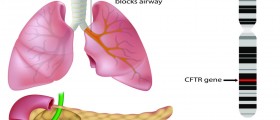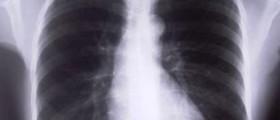
What is Pulmonary Fibrosis?
Fibrosis is a medicinal term used for what people usuallyrefer to as scarring. Out of this a conclusion can be drawn that pulmonaryfibrosis is a medical issue in which the lungs get scarred. This type ofmedical condition can be triggered by numerous different causes such as certaintypes of medications, chronic diseases such as rheumatoid arthritis or lupus,exposure to ionizing radiation such as radiation therapy for the treatment oftumors of the chest, environmental agents such as gases, silica or asbestos,various different types of infections and chronic inflammatory processes suchas sarcoidosis and Wegener’s granulomatosis. Pulmonary fibrosis may also beassociated with a medical condition referred to as hypersensitivity pneumonitiswhich involves a heightened immune reaction to inhaled occupational chemicalsor organic dusts. In most cases of inhaled causes, fibrosis is triggered byinhaling dust which is already contaminated by certain types of animal, fungal orbacterial products. There are also certain cases of pulmonary fibrosis whichoccur without any identifiable triggering factors. Such cases are usuallyassociated with a medical condition commonly known as idiopathic pulmonaryfibrosis. This peculiar condition does not respond to any kind of medicaltherapy. Pulmonary fibrosis may sometimes be referred to as diffusefibrosing alveolitis, Hamman-Rich Syndrome or chronic interstitial pneumonitis.
Prognosis
One needs to be well aware of the fact that pulmonaryfibrosis is a progressive type of disease. This means that no treatment mayimprove the condition and that the condition will not improve all by itself.The speed of its progression may vary from person to person and in some cases pulmonary fibrosis may remain stagnant for many years. Most patients who arediagnosed with pulmonary fibrosis express great concerns about their lifeexpectancy. Life expectancy can only be discussed once all the factors aretaken into consideration. The prognosis usually relies on the informationgathered through numerous researches throughout the years. These researcheshave included thousands of people who suffered from pulmonary fibrosis. Fortunatelyenough, there are certain factors which may imply a longer survival rate amongthose who are diagnosed with pulmonary fibrosis. Such factors include a historyof current cigarette smoking at the time of diagnosis, a positive response totreatment after three to six months, less lung damage based on the highresolution CT scans at the time of diagnosis, minimal shortness of breath atdiagnosis, symptoms that began less than one year before the diagnosis, being afemale and being less than 50 years old. One should be aware of the fact thateach prognosis is only a prediction and it does not necessarily have to be 100percent true. Outcome for each patient cannot be given with absolute certainty.According to numerous different sorts of scientific studies on idiopathic typesof pulmonary fibrosis, an average life expectancy for those who are diagnosedwith this medical condition ranges between 2 and 4 years following thediagnosis. There are also between 30 and 50 percent of cases which can becharacterized by a life expectancy of 5 years following the diagnosis of thedisease. Those who suffer from pulmonary fibrosis are faced with many problemsand challenges. There are people who want to know all about the statisticsbecause they believe that it is easier for them to cope with the disease andits dreadful outcome that way. On the other hand, there are those who do notwant to know anything about the statistical data because they believe that it isonly frightening and confusing and that it is not personal enough to beconsidered useful at all. The healthcare provider is the best person to discussthe life expectancy and all other related issues, but in spite of that facteven he or she cannot provide the patient with exact things that need to beexpected. The decision upon the amount and type of information concerning themedical condition and its prognosis is solely up to the patient.
Quality of Life in Patients with Pulmonary Fibrosis
One of the most important aspects of idiopathic cases ofpulmonary fibrosis is the severe impairment of the levels of independence,physical health and the overall quality of life. The depressive symptoms andthe decreased overall quality of life are directly related to theeffective/emotional scale and the subjective breathlessness which is present ineach case. Fortunately enough, one may try indulging in numerous differenttypes of rehabilitation programs which are aimed at all the psychosocial andphysiological aspects of the medical condition and are very efficient inenhancing the overall quality of life of the patient. There are not that manystudies conducted regarding the quality of life of the patients who suffer frompulmonary fibrosis. One certain thing is that those people act much slower inmost everyday tasks and situations.

















Your thoughts on this
Loading...